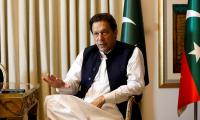The global climate crisis has left no country untouched, but it is the developing world that is facing the most severe impacts. For countries like Pakistan, already struggling with economic instability, climate change ‘burn’ presents not just a threat to the environment but also stresses our national and human security. It has already claimed thousands of lives and caused billions of dollars in damages. At one estimate, just in 2022, Pakistan faced a cumulative drag of eight per cent on its GDP from climate change.
According to the World Bank’s Country Climate and Development Report, Pakistan faces a fairly quantum challenge if climate response and development needs are to be met, amounting to a staggering $348 billion between 2022 and 2030. To achieve deep decarbonization, $196 billion is necessary, while $152 billion is needed for adaptation and resilience, and this is the bare minimum. Strategic responses are further complicated by recurring floods and the return of the El Nino phenomenon, that creates a recovery trap, with countries like Pakistan struggling to rebuild and reconstruct while simultaneously coping with ongoing heatwaves and extreme weather events.
These are no small numbers. From severe heatwaves that melt our glaciers, to catastrophic floods last year that have devastated one-third of Pakistan, it is clear to policymakers that the climate crisis has compounded our nation’s challenges in ways that even today go unrecorded. Livelihoods and income impacts in rural areas are only yet seen as a calculus of growing impoverishment, food insecurity and ongoing soil and hydromet challenges.
Hidden costs across all sectors have not even been registered, as they remain fragmented, systemic and un-processed. Health impacts in terms of high morbidity and mortality are linked directly to municipal over-stress in peri-urban and urban dwellings, not to mention the poor governance of pollution laws and green zoning. Yet it is only at the crosshairs of climate events that the connection between environmental degradation and inaction is publicly linked to surges in composite crises for the most vulnerable.
We know now that water-borne diseases and lack of access to basic health facilities in crisis burdens women and children the hardest and swiftest. Yet the social costs are far from understood in most developing countries, including Pakistan. Unicef alone estimates that 76 per cent of children under 18 in South Asia – 460 million – are exposed to extreme high temperatures where 83 or more days exceed 35 C.
Globally, many developing countries are already struggling with the twin challenges of energy security and debt crises. As a country with less than one per cent of the global emissions, Pakistan is not responsible for adding bulk to the world’s greenhouse gas emissions, yet we are disproportionately affected by the climate crisis. Like others in the arc of climate vulnerability and development, we lack both the capacity and resources to manage the accelerated risks posed by climate change.
Given that adaptation is a top priority which requires significant investments in climate resilient infrastructure, the higher costs of such resilient development must also be flagged. Adaptation can cost up to four times more than conventional development and, even though its returns are potentially equally high, speedy access to financing remains difficult. Despite the international hype about global green financing, climate fund pipelines by and large continue to be projectized, resistant to agile withdrawal and rarely provide budgetary support for countries in crisis.
Despite climate finance pivoting as the backbone of climate action, it remains notoriously elusive for many developing countries on the frontlines of the climate crisis. The international community in 2019/20 had pledged to mobilize $100 billion per year in climate finance for developing countries, but the actual disbursement has fallen well short of the target, and climate finance has both been short and slow to reach the countries that need it most. This lack of funding and adaptive capacity is one of the main reasons why climate action is being held back in Pakistan and other developing countries. The recently created Loss and Damage Fund remains yet to be operationalized, let alone act as a trigger for financing shortfalls in climate emergencies in the Global South, and many fear that if it too remains unfunded due to lack of political will and out-of-the-box solutions for funding, it may well become another ‘ghost fund’.
There is no longer any contest on the claim that speed, scale and capital are the three fundamentals that need to shift if countries on the brink of climate disaster are to rebuild as well as adapt to change. The UNFCCC Standing Committee on finance’s “first report on the determination of the needs of developing country Parties (NDR)” highlights that a staggering $6 trillion is needed by 78 developing countries alone to meet their financial needs outlined in their Nationally Determined Contributions (NDCs) by 2030. It is reasonable to assume that this figure will be much higher once all 199 member states of the UNFCCC implement their NDCs.
Under the principle of Common but Differentiated Responsibilities and Respective Capabilities (CBDR-RC), developed countries have a moral obligation to provide financial support to developing countries to help them mitigate and adapt to the impacts of climate change. What tangles the problem further is that there is no agreed definition of what constitutes climate finance, leading to vastly different claims from developed and developing countries on financing responsibilities.
In the race for climate survival and preparedness, 2030 is the decisive decade. If global financing does not go up, and net zero trends stabilize at Paris targets of 1.5 C above industrial levels, which they are well overshooting, those of us on the frontlines will pay the human and capital cost. If the New Multilateralism, as the UNSG calls it, is to have any meaning or form, it has to meet climate sustainability head on in transformative solutions.
One way to get past the chokehold on financing climate challenges was already on the table at the Paris Summit 2023. The summit proposed many creative paths forward for reforming the international financial architecture to ensure climate finance is accessible to developing nations with new sources of funding to be explored and tapped without adding to the debt burden of vulnerable countries. Why? Because developing countries are borrowing at much higher rates than developed countries, creating a heavier debt burden that becomes a punishing drain on national budgets.
At the same time, lower-income countries end up spending five times more on debt servicing than on climate mitigation and adaptation. For instance, Pakistan spent 400 times more on debt servicing (Rs3950 billion) than funding its climate ministry (Rs10 billion) to lead climate mitigation and adaptation.
Many developing countries are often told that they need to undertake painful structural reforms by creditors. This is not unreasonable, but in times of a climate polycrisis, there is a compulsion for global multilateral institutions to find innovative sources of funding and financing for those it should service without piling on more debt. One way of course to do this is to bring in the private sector into the room, but not as a conventional investor, because that leaves a huge de-risking hole in the piece, and leeches climate smart investments away from countries that are both debt and climate stressed.
Conventional wisdom toolkits are well past their capacity in even providing coping-expense buffers for frontline countries. In existing scenarios, the private sector only comes in when it appraises profits on its investments. When climate-stressed unpredictability comes into the mix, which it invariably does today, the power-point presentations to transform entire countrysides from a Shakespearian ‘blasted heath’ to booming-farm-utopia all melt away, reinforcing the fact that investors shy away from high levels of risk.
Yet the solutions too lie at the heart of the crisis in global capitalism, where the oil and gas sector rakes in unprecedented profits from the fossil fuel industry, and barely gets tapped as a profit-percentage pegged capital investor in high-risk countries.
Without these difficult conversations to fund climate stress, or carbon trade frameworks that are not universal, multilateralism will never catch up to climate change.
The writer is the former federal minister for climate change and environmental coordination.
This demand has fueled rapid growth deposit base of Islamic Banks and Islamic Windows operated by conventional banks
But Punjab Agriculture Food and Drug Authority building near Thokar Niazbeg on Multan Road stands out
Macron has been particularly vocal in their criticism, asserting that withholding arms from Kyiv plays directly into...
As PPP governs province, Bilawal Bhutto Zardari holds strategic position to address both violence and its underlying...
Critics argue that strategy is vague, but closer look indicates strategic alignment with global trends and national...
To defeat it, we must distrust bot-driven narratives, to defeat it, we must verify sources before believing or sharing







